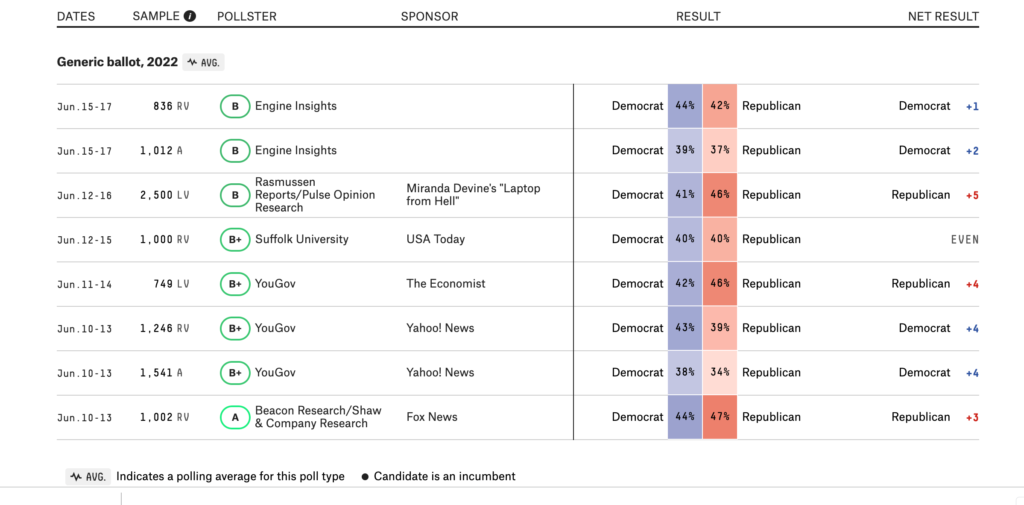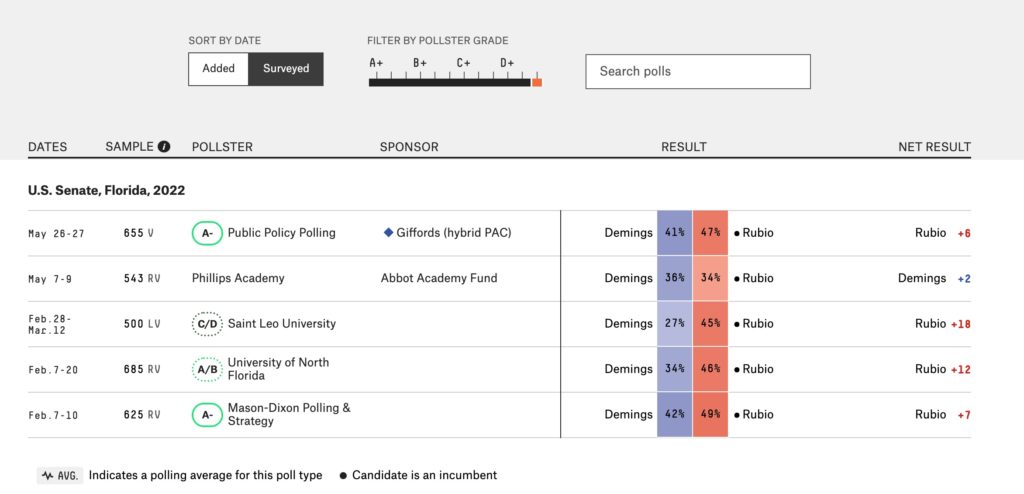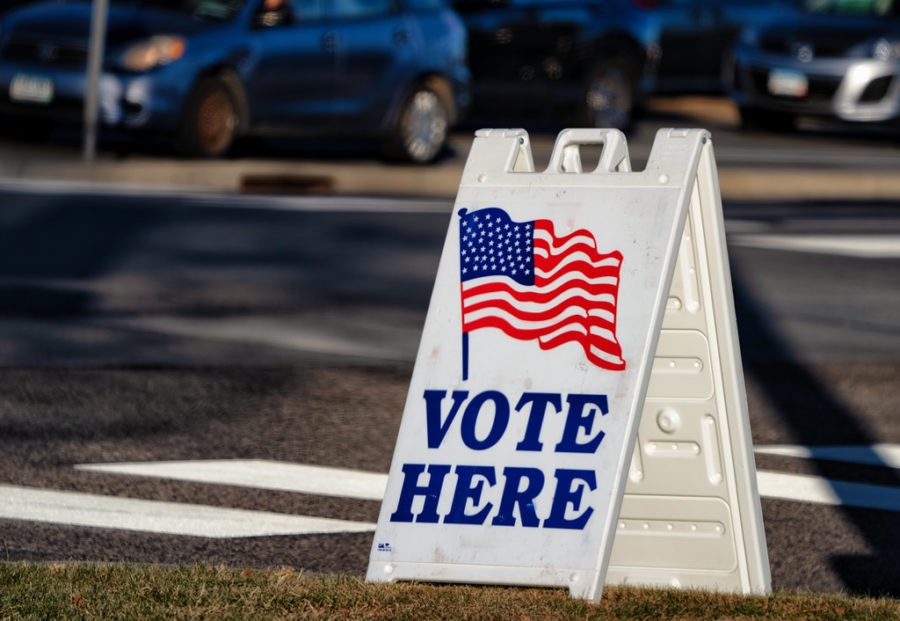We’re about midway through the primary calendar, but a busy two months are still ahead.
Will Republicans continue to favor authoritarian-leaners like Doug Mastriano in PA, and racist dog-whistlers like JD Vance in Ohio? Or will Georgia’s stinging rebukes of Trump’s meddling become the norm?
And, on the other side, can Democrats field appealing enough candidates to hold their ever-so-slight majorities in the House and Senate? Or are they in for the “midterm thrashing” that many pundits expect.

An Updated Look at the Generic Ballot
As explained by the University of Virginia’s Center for Politics, “The generic ballot is the best tool for forecasting the House popular vote, and is especially useful in cycles without presidential races atop the ballot.”
This is because the generic ballot measures voters’ preferences, absent a potentially polarizing actual candidate.
For the 2022 midterms, the generic ballot has been one of the factors often cited by pundits predicting a red wave. According to pollster Rasmussen Reports, “The GOP has led the Generic Congressional Ballot all year.” But that lead is shrinking. For the Rasmussen poll, a Republican advantage that had ballooned to almost 9 points is down to 5, while the RealClearPolitics polling average has the advantage at only 2.5%. Meanwhile, aggregators at FiveThirtyEight show it at just 2, and multiple recent polls have actually favored Democrats.

Polling in Key Races
But what of Congressional races that do have an actual candidate attached? It’s been extensively reported that post-census redistricting has eliminated many House seats that used to “swing,” favoring, instead, on both sides of the aisle, districts that are either Safe Blue or Safe Red.
According to NPR, “only roughly 30 of 435 U.S. House seats will be considered traditional “swing seats” on the ballot this November.” The rest will tend to favor the more extreme and vocal among each party’s base, with little incentive to work across the aisle or speak for “moderates.” This is why polling for House races appears to show wider margins than statewide races for Senate will.
But, for some of those statewide races, where the primaries are behind us and the candidates set, we do have interesting polls beginning to appear. Among them:
In North Carolina Republican Ted Budd leads Democrat Cheri Beasley by an RCP Average of 3.3. But! The most recent high quality single poll, from A rated pollster SurveyUSA, does show Beasley having grabbed a 4 point lead.
In Pennsylvania, John Fetterman (46%) holds a commanding lead over Mehmet Oz (37%).
In Georgia, in what’s sure to be one of the tightest Senate races in the country, polling between Democrat Raphael Warnock and Republican Herschel Walker has consistently been within the margin of error. As has polling in Nevada, where individual polls swing wildly between Republican Adam Laxalt at around +3, to Democrat Catherine Cortez Masto at as many as +9. In Florida as well polling has tended to have a pretty wide variance, but with Republican Marco Rubio tending to lead Democrat Val Demings (as pictured below).

Republicans can’t ‘close the deal’ with voters
All of this suggests that while Democrats have strong headwinds, Republicans are failing to ‘close the deal’ with potential swing voters. This is especially evident in the Senate, where polls show that Fetterman’s popularity in Pennsylvania, coupled with the laughable candidacy of New Jerseyan Dr. Oz, has Democrats likely to flip that seat from Republican to Democrat.

